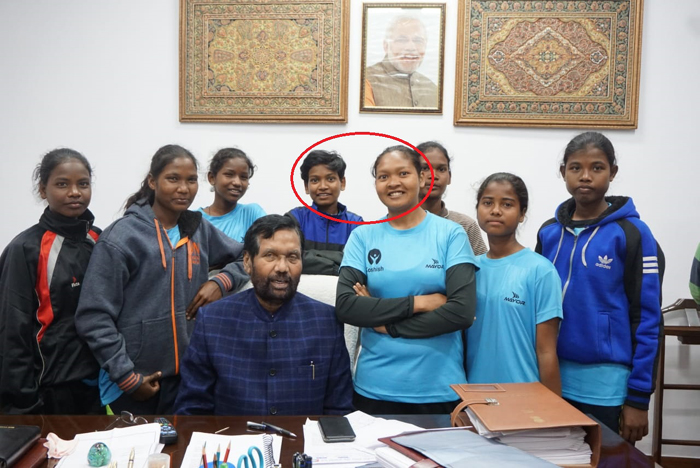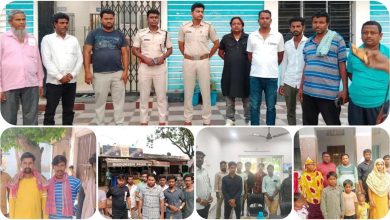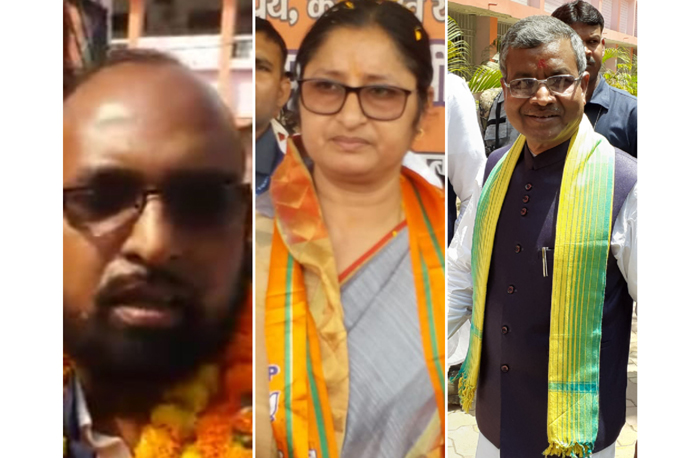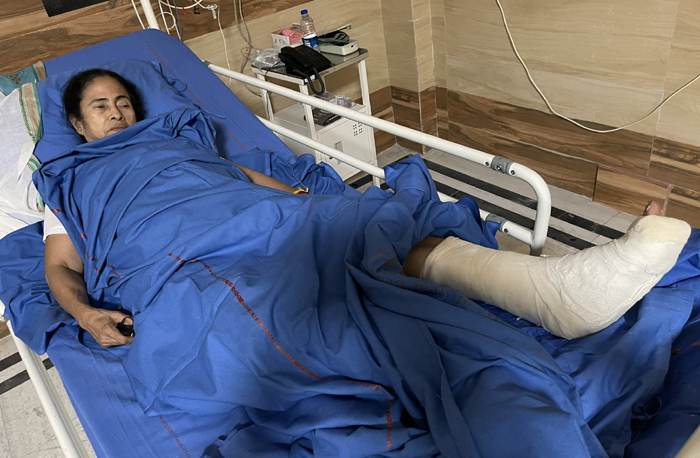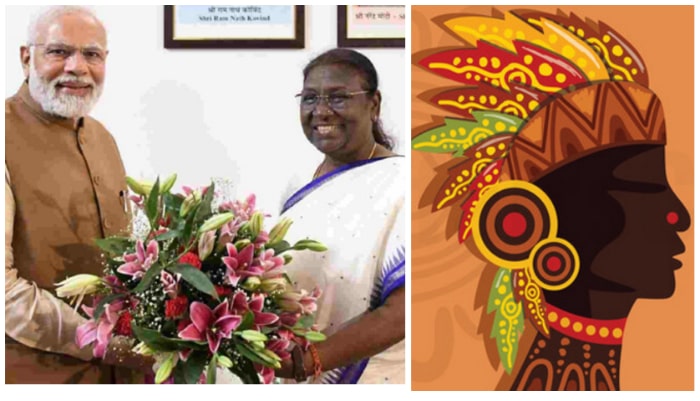Stop genocide, bombing on hospitals: Kolkata doctors rally for Gaza
Doctors, nurses and other healthcare professionals rally for peace in Palestine, demanding an end to the crimes against humanity being committed by Israeli forces. The medicos have also written to the UN expressing their desire to serve those in need of medical help
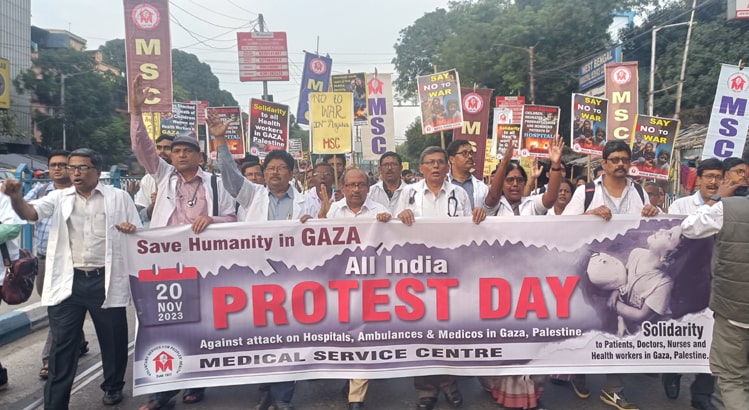
Kolkata: On Monday, doctors and healthcare staff Kolkata chose to hold a rally demanding an immediate ceasefire in Palestine. While, doctors hitting the streets might be a rare sight, the participating practitioners maintained that they had no option but to organise a rally to send out a loud message that the attack on healthcare infrastructure is an attack on humanity and that there should be an immediate ceasefire.
After October 7, more than 12000 people including 200 healthcare workers and doctors were killed in the bombardment and other ways of attacks by Israeli forces. Reports also suggest that so far more than 30 hospitals have been bombed in Palestine.
Protesting against the crime against humanity committed by Israel, the healthcare workers associated with the Kolkata chapter of the Medical Service Centre (MSC) rallied in Kolkata. Several doctors, nurses and other healthcare professionals gathered with placards, posters and banners outside Neel Ratan Sarkar (NRS) Hospital to demand an immediate end to the numerous war crimes being committed in Gaza.
The healthcare professionals, during the rally, brought out in support of the patients, doctors and healthcare system that are being targeted by Israeli armed forces, walked in solidarity from the NRS Hospital to Calcutta Medical College Hospital.
The Kolkata rally was part of a number of rallies organised by MSC across the country.
“We have organised this rally to express our concern about the ongoing war crimes being committed by the Israeli forces in Gaza. The attack on the healthcare system including the doctors and patients is deplorable. We demand a complete ceasefire and an end to the war crimes being committed there,” said Dr Biplab Chandra, MSC West Bengal state secretary, as he walked along with his fellow members.
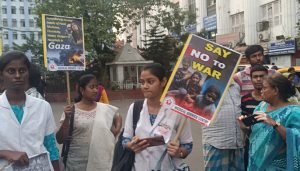
Adding to that Dr Anshuman Mitra said, “The dastardly attacks on patients, doctors, pregnant women and children need to come to an end. The constant bombardment of healthcare infrastructure is a violation of the UN Geneva Convention. Hence, we as doctors are here to condemn the war crime being committed by Israel in Palestine.”
The doctors and healthcare professionals congregated at the main gate of the hospital after the rally, raising concern over hospitals being targeted by the Israeli armed forces. They maintained that this was the least that they could do to protest against the constant attacks being made on Gaza’s healthcare infrastructure.
“This is the least that we can do,” said Dr Mridul Sarkar, Secretary, MSC CC. He maintained, “As a doctor, seeing fellow doctors being killed on duty is painful.” On being asked what he thought about the attack on Gaza’s Al-Shifa, he said, “What’s happening out there is painful. The world is a witness to the war crimes being committed by Israel. We just can’t believe the Israeli propaganda news claiming that Al-Shifa was used by Hamas as a human shield.” He then paused and said, “Remember, how the US while attacking and hounding Saddam Hussein had claimed that weapons of mass destruction were present in Iraq and needed to be destroyed. But what emerged were tales of crimes being committed in Abu Ghareb. We believe what’s going on in Gaza is similar to what happened back then.”
The doctors have written to the UN not just demanding a complete ceasefire but also expressing their desire to serve those in need of medical help in Gaza under its aegis.
Time Magazine, also reported that doctors in the United States have claimed that they will not be silent about what is happening in Gaza.


